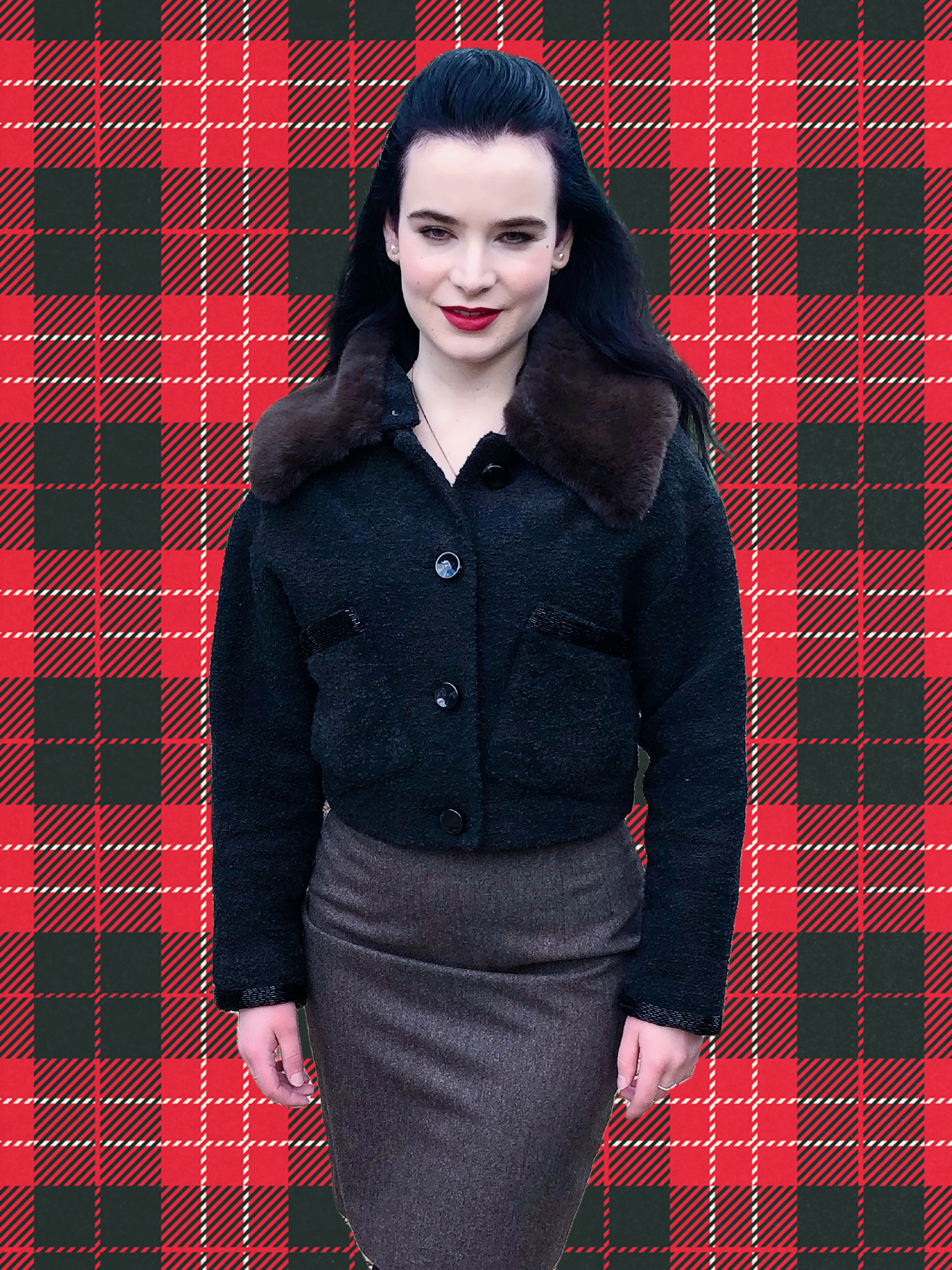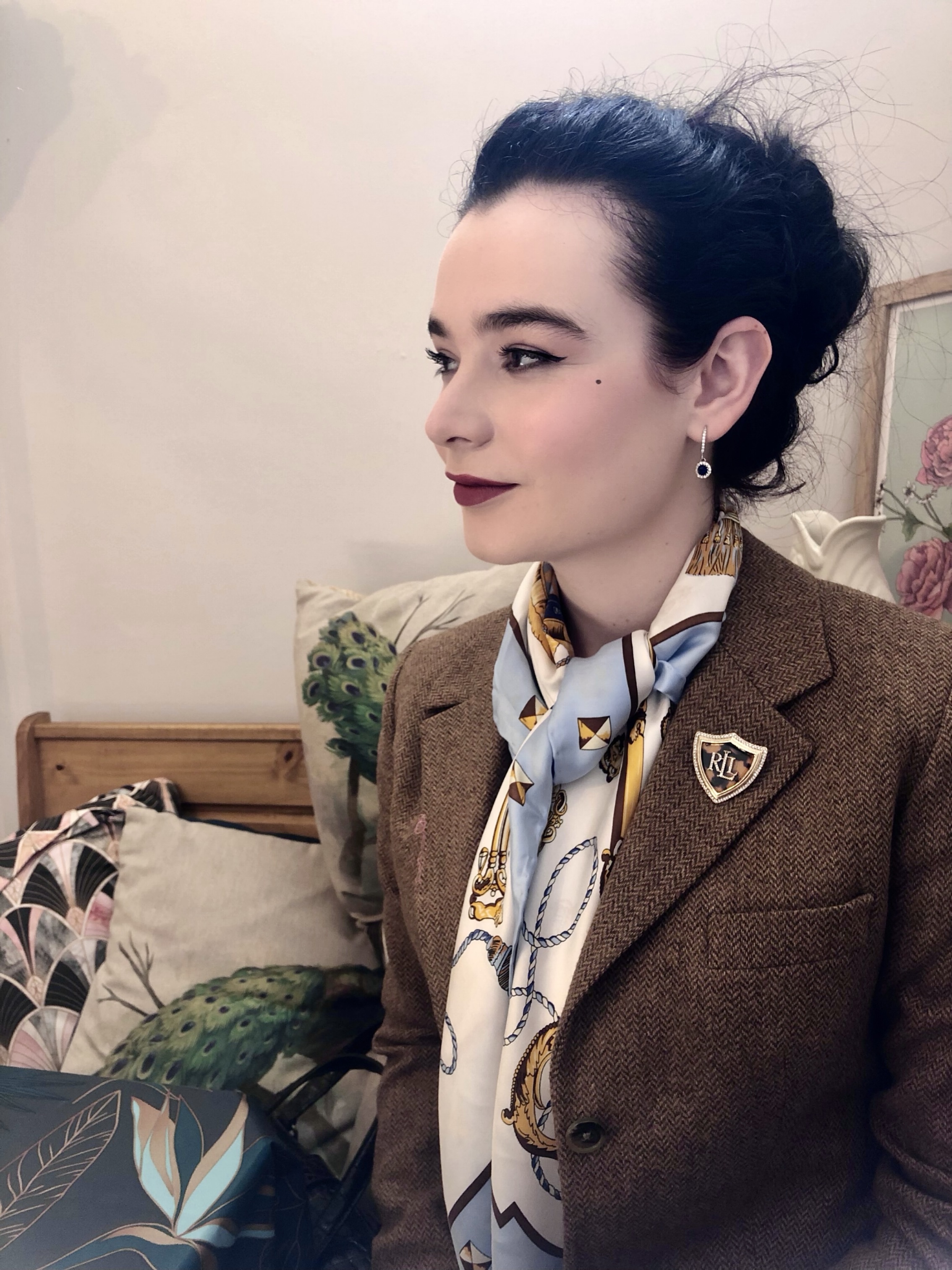
The perfectly versatile Harris Tweed has been a staple in my wardrobe for many years. Considering my tweed obsession is continually growing, I thought it was time I delved into the history and origin of the iconic fabric and shared my style ideas for incorporating tweed into a (somewhat!) modern look, if, unlike me, you are not accustomed to combining multiple items of tweed in one outfit.

Essentially a woven woollen fabric in a twill or herringbone structure, tweed originates from Scottish Outer Hebrides, most specifically, the Isle of Harris. The name ‘Tweed’ is said to have been an accidental misspell of ‘tweel’ – the Scottish term for ‘twill’. However, with its close association with the River Tweed, the term was deemed coincidentally fitting and thus tweed became an established fabric.
In the 1800s, the iconic Harris tweed became a desirable choice of upper class outerwear for pursuits such as hunting or shooting due to its durability in harsh weather. Yet, on the advent of the Edwardian Era at the turn of the 20th century, tweed became fashionable amongst the middle classes who aspired to the upper class aesthetic embodied by tailored tweed clothing, yet, simultaneously re-contextualised tweed from symbol of upper class rural elitism into a fashion statement of modernity and urban professionalism. This social change and increasing popularity of tweed was encapsulated by the creation of tweed cycling wear.

With the changing image of tweed at the turn of the 20th century, I want to especially focus on the impact of tweed on the image of women and the changing notion of femininity. The idea of The New Woman encompassed a shift from staple fabrics of lace and silk, towards a more masculine aesthetic with robust tweed tailoring. Skirts were wide cut and heavily pleated with inbuilt bloomers which enabled The New Woman to gain both physical mobility when cycling as well as social mobility with the independence that came hand in hand with this freedom.

The prominence of tweed in the contemporary image of femininity in the early 20th century was famously adapted by Coco Chanel in 1924 for her collection inspired by and incorporating Harris tweed and still endures as a classic style in Haute Couture. As of present day, Tweed is continually represented on the catwalk by designers such as Ralph Lauren, Moschino and Prada, often with a modern, ‘mini-kilt’ twist inspired by the iconic 60s mini skirt, proving that Tweed is far from being a by-gone fashion.

Despite its continuous re-emergence on the catwalk, Tweed is very much absent from the high street and from popular fashion trends. As a material bound in so much social history, tweed, and its associated tailored designs, undoubtedly sets a statement image. Yet, in the 21st century, the tweed statement is multifaceted: it is at once conservative and avant-garde; casual and professional. Tweed endures, and, through this brief history of tweed that I have laid out, it is apparent that far more is woven into the image of tweed than just its twill.
Regardless of the occasion, I would say tweed is always an appropriate choice. I love re-styling classic traditions and incorporating a modern twist. Pairing a tweed jacket with jeans or a tweed mini kilt suit can be a perfect smart outfit. These are some of my favourites…





